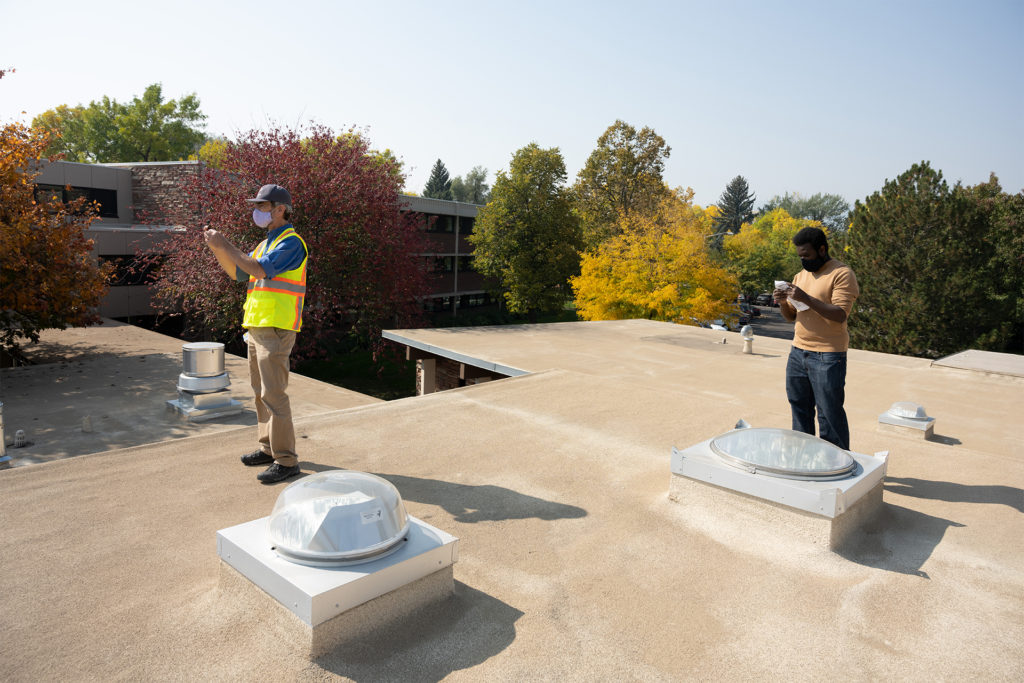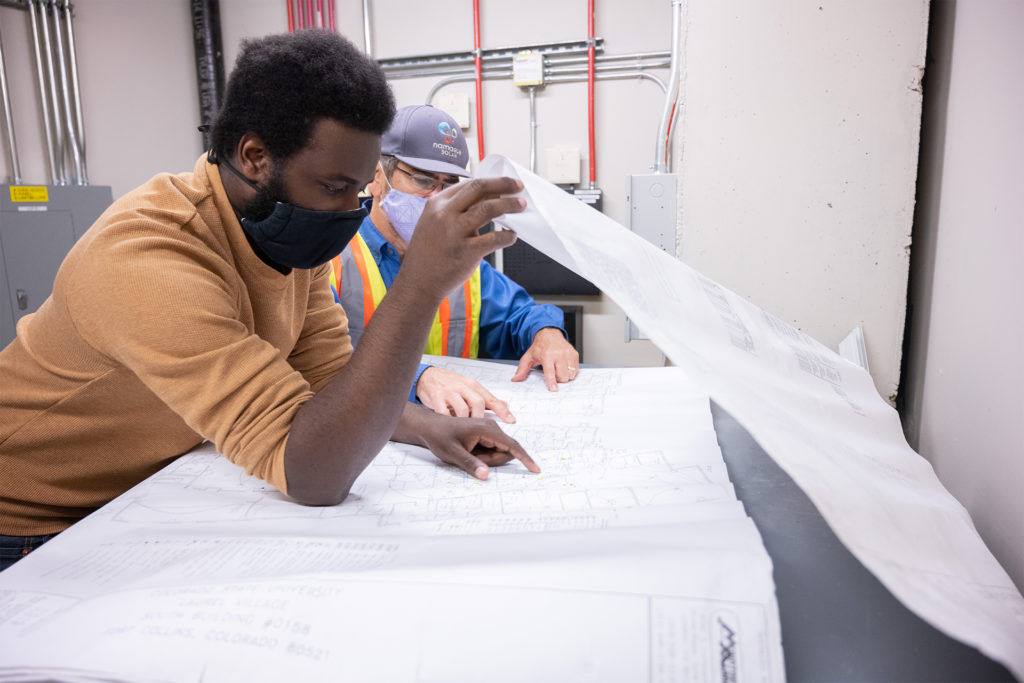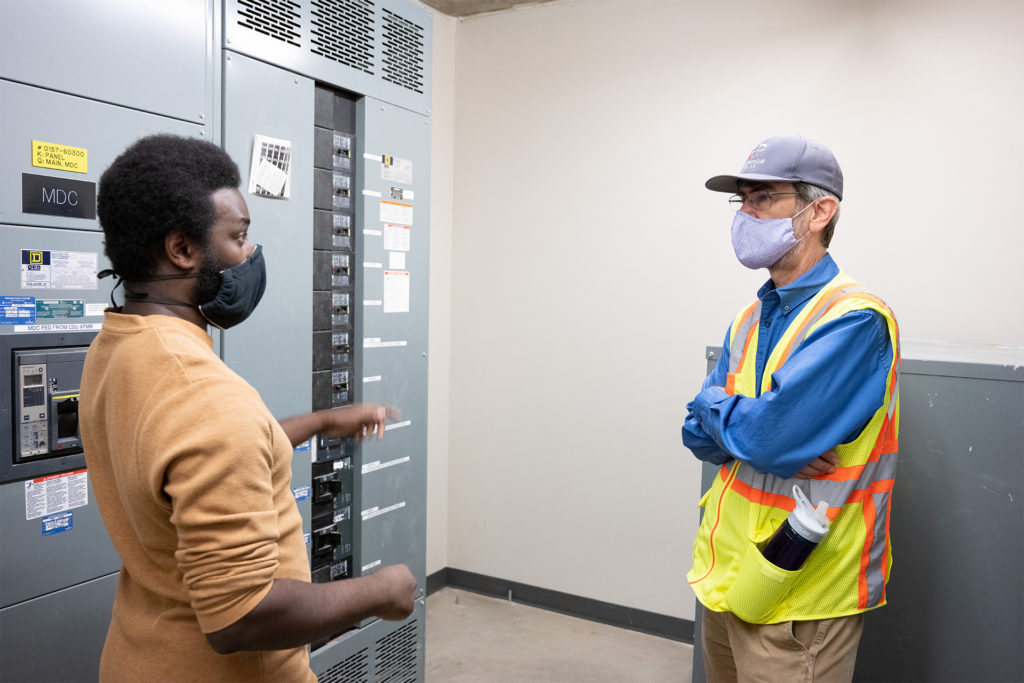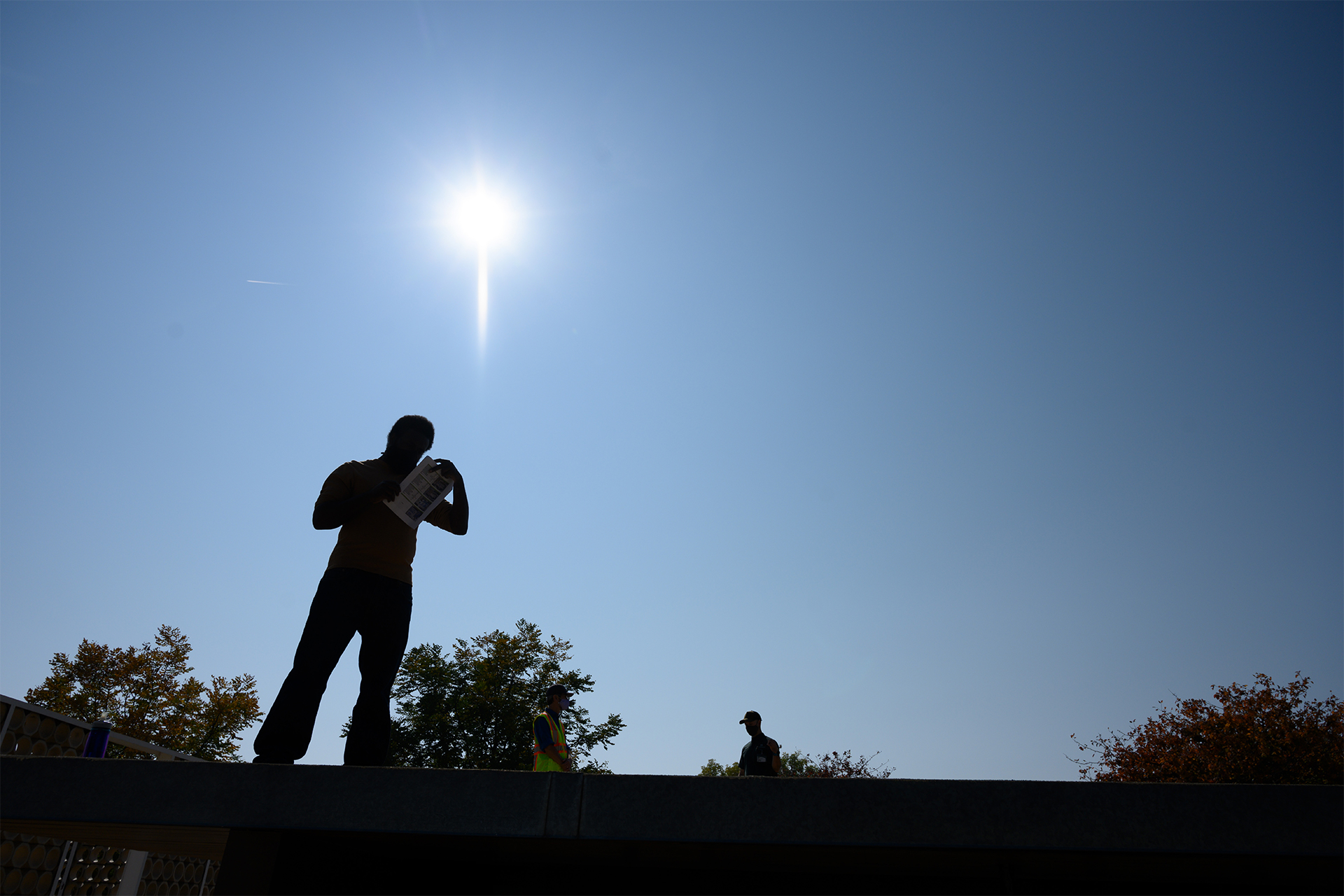


Namasté Solar Project Development Lead Designer Arthur Hicks and Commercial Technical Designer Rick Coen look at an electrical panel at CSU’s Alpine Hall during a site visit to plan future solar installations. Photos by William A. Cotton/CSU Photos
Colorado State University will soon have twice as many reasons to sing “Let the sunshine in.”
A recently signed partnership with Namasté Solar and Solaris Energy has the potential to double the amount of solar energy on the Fort Collins campuses, bringing the university closer to its goal of 100% renewable electricity by 2030.
“CSU is a leader in many aspects of sustainability and we are always proud of that,” said Carol Dollard, CSU utility engineer. “Sustainability in operations is actually the area where we have the most room for improvement and this project helps us close that gap. More solar installations will continue to advance carbon reductions and help us on the path to 100% renewable electricity.”
The solar partnership will save CSU money and hedge against future electricity rate increases since the rate of solar energy is fixed for the length of the contract, typically 20-25 years. It will also reduce carbon and other emissions associated with electricity from the grid, Dollard said.
Namasté Solar and Solaris Energy are working with CSU’s sustainability and CSU Facilities Management staff to identify site feasibility for installation on rooftops, carports, and ground mounts. Construction and installation is slated to begin in the first half of 2021 with project completion set for late 2022.
Through the agreement, Namasté Solar, an employee-owned cooperative based in Colorado, will develop, design, and construct solar arrays at up to 30 sites at CSU’s campuses and provide long-term operations and maintenance. CSU will retain ownership of Renewable Energy Credits attributed to the new systems and locally-based Solaris Energy will provide the needed financing for the project, then own and manage the systems as a part of its larger asset portfolio.
“When institutions such as CSU partner with local businesses like Namasté Solar, it positively amplifies their impact in multiple ways,” said Jason Sharpe, co-owner and CEO at Namasté Solar. “We believe that investing in renewable energy is one of the best paths to economic recovery and a healthier environment and working with local entities creates well-paying green jobs in the community.”
A pledge to renewable energy

Namasté Solar Project Development Lead Designer Arthur Hicks looks over the roof of CSU’s Ingersol Hall during a site visit to plan future solar installations. Photo by William A. Cotton/CSU Photos
In January 2017, President Tony Frank signed a pledge to power the campus by 100% renewable electricity by 2030. That commitment was bolstered in 2018 when the City of Fort Collins and the Platte River Power Authority made the same promise.
It’s an ambitious objective – and one that isn’t expected to be reached with solar alone.
Dollard describes it as a matter of CSU’s total kilowatt hours, or the number of kilowatts needed to power the campus for one hour. Currently, the University requires 170 million kilowatt hours to serve its campuses across the state, and the various current solar arrays generate about 10 million kWh. So other types of renewable energy, like wind, will likely be needed to reach the goal, Dollard explained.
CSU currently has solar arrays on Engineering buildings, at Christman Field, the Student Recreation Center, University Center for the Arts, Academic Village, Behavioral Science Building, Lake Street Parking Garage, Research Innovation Center, Morgan Library Cube, Powerhouse Energy Campus, Braiden Hall, Parmelee Hall, Veterinary Teaching Hospital and Edwards Hall.
Read more about CSU’s solar energy history.
For more information on this and other sustainability initiatives at CSU, visit green.colostate.edu.